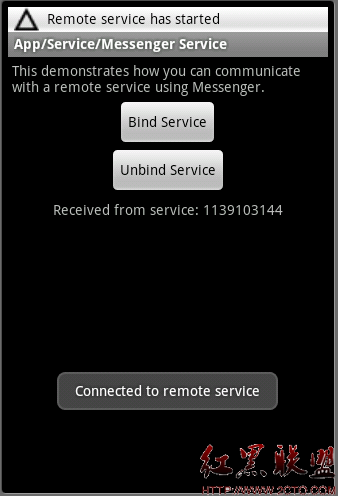蓝牙耳机简单的流程分析
最近在关注蓝牙耳机方面的问题,做下简单的流程分析。
解码后,在AudioFlinger里把音频数据写到设备里。这里主要看看AudioFlinger,AudioPolicyManager和external/bluetooth/bluez/audio里面的android_audio_hw.c和liba2dp.c。
在AudioPolicyManager里有设备连接判断。
status_t AudioPolicyManagerBase::setDeviceConnectionState(AudioSystem::audio_devices device,
AudioSystem::device_connection_state state,
const char *device_address)
{
#ifdef WITH_A2DP
// handle A2DP device connection
if (AudioSystem::isA2dpDevice(device)) {
status_t status = handleA2dpConnection(device, device_address);//这里是执行蓝牙连接
if (status != NO_ERROR) {
mAvailableOutputDevices &= ~device;
return status;
}
} else
#endif
}
。。。。。
status_t AudioPolicyManagerBase::handleA2dpConnection(AudioSystem::audio_devices device,
const char *device_address)
{
...............
mA2dpOutput = mpClientInterface->openOutput(&outputDesc->mDevice,
&outputDesc->mSamplingRate,
&outputDesc->mFormat,
&outputDesc->mChannels,
&outputDesc->mLatency,
outputDesc->mFlags);
if (mA2dpOutput) {
// add A2DP output descriptor
addOutput(mA2dpOutput, outputDesc);
//TODO: configure audio effect output stage here
// set initial stream volume for A2DP device
applyStreamVolumes(mA2dpOutput, device);
if (a2dpUsedForSonification()) {
mDuplicatedOutput = mpClientInterface->openDuplicateOutput(mA2dpOutput, mHardwareOutput);
}
if (mDuplicatedOutput != 0 ||
!a2dpUsedForSonification()) {
// If both A2DP and duplicated outputs are open, send device address to A2DP hardware
// interface
AudioParameter param;
param.add(String8("a2dp_sink_address"), String8(device_address));
mpClientInterface->setParameters(mA2dpOutput, param.toString());
mA2dpDeviceAddress = String8(device_address, MAX_DEVICE_ADDRESS_LEN);
if (a2dpUsedForSonification()) {
// add duplicated output descriptor
AudioOutputDescriptor *dupOutputDesc = new AudioOutputDescriptor();
dupOutputDesc->mOutput1 = mOutputs.valueFor(mHardwareOutput);
dupOutputDesc->mOutput2 = mOutputs.valueFor(mA2dpOutput);
dupOutputDesc->mSamplingRate = outputDesc->mSamplingRate;
dupOutputDesc->mFormat = outputDesc->mFormat;
dupOutputDesc->mChannels = outputDesc->mChannels;
dupOutputDesc->mLatency = outputDesc->mLatency;
addOutput(mDuplicatedOutput, dupOutputDesc);
applyStreamVolumes(mDuplicatedOutput, device);
}
} else {
.........
}
如果只是蓝牙播放,那么mDuplicatedOutput和a2dpUsedForSonification都为0,仅执行 addOutput(mA2dpOutput, outputDesc);,走类似speaker和麦克风的流程。
如果是蓝牙和speaker或麦克风同时播放声音,走mpClientInterface->openDuplicateOutput(mA2dpOutput, mHardwareOutput);注意
补充:移动开发 , Android ,




